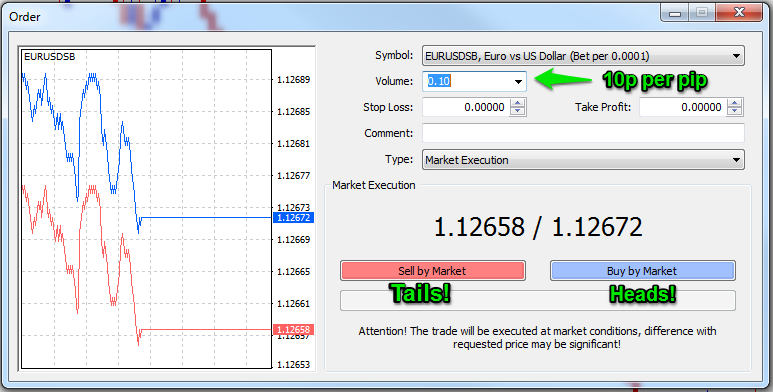There’s no doubt about it, good trade management is a skill that can only develop through conscious practice.
There’s no real short cut other than to expose yourself to the feelings and emotions you’ll go through as you put real money on the line.
Unless you have psychopathic tendencies (the good kind!) of course, in that case you will have no problem riding the emotional rollercoaster.
So this tip I’d like to share with you is something a little unorthodox.
It’s a training technique I was exposed to when I first started trading futures.
It’s designed to quickly get you over any hang-ups about having trades open with money on the line (so you can start to follow your trading plans with a clearer mind). And it is super-effective.
Here it is…
ALWAYS hold an open position. Never be flat
I must stress, this is a TRAINING technique.
It’s a way to quickly get over the strange feelings and anxieties that can creep out of the woodwork when you have open trades on your account.
We’re not using this as a way to actually manage your live-campaign trades, so please don’t send angry emails telling me it goes against all the conventional stuff you’ve read in trading books!
Here’s what you do…
Choose a market that’s active at the time you’re sitting down to do a training session, call an order ticket up onto your screen, and enter a small trading volume (that’s the £ stake per pip if you’re spread betting).
(I’d suggest trading this exercise with the minimum available stake size. 10p per pip is available from most SB brokers so that’s the kind of stake you’d be expecting to use.)
Next, toss a coin: Heads you’re going to buy, tails you’re going to sell!

So depending on how your coin landed, you’ll either hit the ‘Buy by market’ or ‘Sell by market’ button if you trade using the Metatrader platform.
And then you simply ride out the undulations of the market!
Follow the market on a very short timeframe – a one minute, or two minute chart can be effective – or simply try to tune yourself into pure order flow as you watch the changes in the bid and the ask price.
It doesn’t matter if you usually trade the 4 hour chart or the daily chart. The idea here is to expose yourself to sensory overload and get you desensitised to emotions that can affect your discipline.
The small timeframes I suggest using for the exercise can help condense that experience and heighten its effect.
Set yourself a time limit and tell yourself that for the next hour you’re going to participate in this market. You’re not allowed to be flat but you can reverse the direction of your position. To do that you’d simply enter an opposing ‘market’ order with a volume of 20p per pip.
So you can be long or short, but you must maintain your presence in the market and change your trading direction according to what you see and think.
The idea is to get you over any timidity you might feel when you have open trades. But you’re going to notice something strange too…
You’ll start to see market features in ‘High Definition’
This is your brain’s reticular activating system (RAS) – the bit that filters out the stuff it thinks is really important to you – kicking in.
And it’s really going to lock onto your trading chart and give it high priority because of the perceived element of risk (doing this on a demo account with virtual money isn’t going to give the same benefits).
Your RAS is the reason you can suddenly start to perceive price patterns or other phenomena conspiring against your trades – things you didn’t consider relevant (and almost certainly are not relevant) before you pulled the trigger.
But by working with the ‘always have a position’ exercise you can build a resistance to the sudden panicky feelings you can get when your market vision turns HD as a result of a filled entry order.
It can help you stay clear-headed and in control when it comes to your real trades.
By the time you’ve dedicated yourself to three or four hour long training sessions you’ll start to feel comfortable in this state of heightened market awareness and it can have a big effect on your ability to stick to the plan on your ‘real’ trades.
One word of warning: please do be aware of any economic announcements that are due out on the days you intend to do your training!
Give yourself a 15 minute buffer either side of a big announcement to sidestep the increase in volatility (unless you fancy a real test of your mettle!)
Taking the time to rehearse holding a position is something many traders wouldn’t even consider, but keep the 5 P’s in mind while you do this exercise…
Prior Preparation Prevents Poor Performance
And don’t worry about losing money. I’d set a small amount aside as your ‘trading tuition fee’ and fully dedicate it to exercises like this.
You could even TRY to lose a small amount of money as you move in and out of your long/short positions as an extreme version of the exercise.
How about that for an ego-busting element that’d turn all the normal emotional entanglement on its head?
Until next time…
